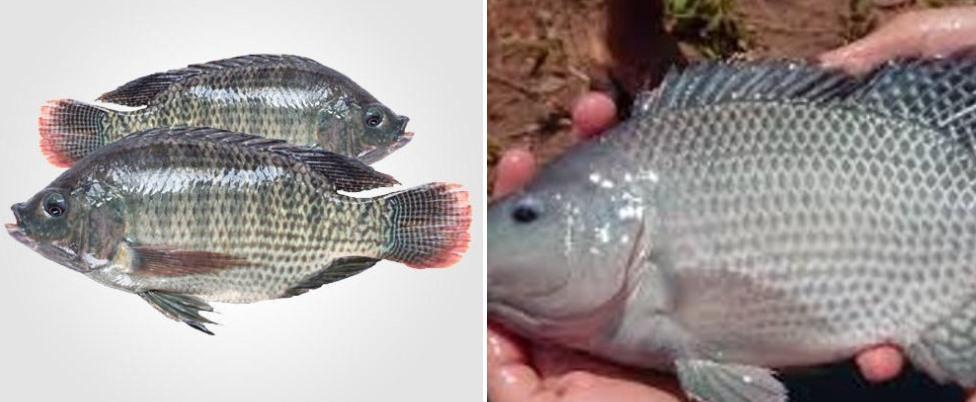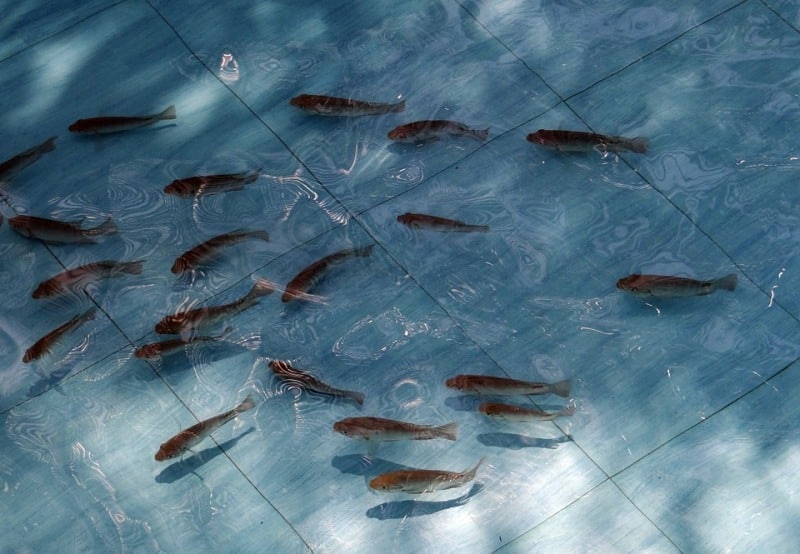A step by step guide to Tilapia fish feed formulation
Everybody likes to raise fish and it is fun and profitable as well and today, let us discuss the tilapia feed formulation along with the ingredients required to make this feed.
The name tilapia refers to several species of mostly freshwater fish that belong to the cichlid family. Although wild tilapia is native to Africa, the fish has been introduced throughout the world and is now farmed in over 135 countries. Tilapia is an ideal fish for farming because it doesn’t mind being crowded, grows rapidly, and consumes a cheap vegetarian diet. These qualities translate to a relatively inexpensive product compared to the remaining types of seafood.
Tilapia is a hardy, aggressive freshwater fish originally native to Africa that reproduces quickly and eats a grain-based vegetarian diet. This fish grows fast and can reach a size for harvesting within 8 to 10 months. Tilapia fish is a white fish with a bland flavor that makes it a good substitute for other white fish, including snapper, grouper, flounder, and rockfish. Tilapia fish is available year-round fresh and frozen, whole and in fillets, and frozen value-added fillets.

Tilapia fish first gained popularity as an easily farmed fish that could supply cheap but high-quality animal protein in developing countries.
The aims of identifying locally available feed ingredients and applying them to tilapia aquaculture were to;
- Better utilize household and locally obtainable resources;
- Incorporate and develop indigenous technical knowledge;
- Enable the development of rural enterprises to generate affordable tilapia feed and provide local employment;
- Increase self-employment and economic participation of women;
- Improve the productivity of smallholder fish farm in general and thereby raise supplies of fish to farm households and other poor people, help fill the human nutritional need for animal protein, and develop farm incomes to alleviate poverty; and
- Improve watershed management and improve water productivity.
Tilapia foods and feeding
Tilapia feed on a wide range of food which makes them a favorite fish to grow. Juvenile tilapia is omnivorous, meaning that they are opportunistic feeders that ingest for both plants and animals without specialization. Adult tilapia is primarily herbivorous.
Tilapia can be raised successfully using the natural food that is obtainable in farm ponds and other water bodies. The nutritional material in farm ponds can be enhanced with the adding of manures. Organic fertilizers introduce detrital material and promote the development of plankton and algae. These materials can be consumed by tilapia and give nutrition for their growth. Rural farmers using organic fertilizers can grow tilapia fingerlings to marketable size in six months.

Although tilapia can be divided into tilapia species which eat mainly water plants and species which eat mostly smaller plants (algae) under pond culture conditions they have highly flexible feeding habits so nearly any type of food supplied will be eaten. Dead material found on the pond bottom forms a large part of their food. Fertilizing tilapia ponds with manure and artificial fertilizers increases overall fish food production in the ponds.
You should not miss the Most Profitable Crops; High-Profit Cash Crops in India.
A variety of feeds can be used when culturing tilapia fish in ponds. Tilapia young rely generally on the natural production of food in the pond. Adult tilapia can be raised solely on the natural food production in the pond resulting from manure and artificial fertilizer application. This natural feed production can be supplemented, to a bigger or lesser extent, by the addition of remaining food.
Tilapia fish can be fed plant materials like leaves, cassava, sweet potato, cane, maize and papaya and various waste products like rice bran, fruit, brewery wastes, cottonseed cake, peanut cake, and coffee pulp.
When raising tilapia in tanks or intensive recirculating systems, natural foods will require be supplementing or replacing with formulated foods. Newly hatched fry need smaller food particles. They can be fed a particularly formulated powder that can meet their nutritional requirements at this crucial stage of growth. Fingerlings can be fed larger, formulated foods that have digestible proteins and fats to promote growth.
As tilapia fish increase in size, they can be fed a pelleted diet that contains key nutrients such as proteins (amino acids), fats, minerals, and vitamins. Tilapia fish raised in tanks cultures benefit from having a consistent diet compared to tilapias that depend on natural foods in native water bodies.
Tilapia Feed Types
Formulated or compounded feeds can be given to tilapia in the dry, moist or wet form. Dried compounded feeds can be obtainable to tilapia as powder, pellets, or crumbles. Pellets are popular and their shape and size could depend on the age of the tilapia.
The compound feed of Tilapia:
Generally, the compound feed of Tilapia is mainly in two types. They are;
- Pelleted feed and
- Extruded feed
To produce pelleted feed, the conditioning temperature must be controlled between 80- 95c. With a sufficient conditioning period, good gelatinization could be achieved. And then pelleted feed formed is characterized with long term stability in water and smooth appearance.
To produce extruded feed, super micro grinding equipment with 80% mesh requires to be employed to produce perfected extruded feed. Furthermore, there is less wear on the extruder in the feed production process to prolong its service life.
Whether, pelleted feed or extruded feed, the pellet diameter is around 1.5 to 5.0 mm. Being used in different growth periods, fish feeds are generally named fingerling feed, adult fish feed, etc. In general, the price of extruded feed is higher than that of pelleted feed; however, the breeding efficiency of extruded feed is before that of pelleted feed.
Commercial fish feed pellets are manufactured by extruded (floating or buoyant) or pressure-pelleted (sinking) feeds. Both floating and sinking feed pellets can generate satisfactory growth, but some fish species prefer floating, others sinking. Floating fish feed pellets are desirable for tilapia fish which feed on the surface layers of water.
Extruded or floating feed pellets are more expensive due to the higher manufacturing costs. Determining whether feeding rates are too low or too high is very important in maximizing fish growth and feed use efficiency. With a fish feed pellet extruder, you can compose floating fish feed pellets conveniently from common materials at a low cost.
The feed is obtainable in a variety of sizes ranging from fine crumbles for small tilapia to large (1/2 inch or larger) pellets. The pellet size must be approximately 20-30% of the size of the tilapia mouth gape. Feeding too small a feed pellet results in inefficient feeding because more energy is used in finding and eating more pellets. On the other hand, pellets that are too large will depress feeding and, in the extreme, cause choking. Choose the largest-sized feed the tilapia will actively eat.
You should also consider the Prawn Farming at Home for Maximum Profits.
Tilapia fish feed formulation:
- Low-cost tilapia fish feed formulated from locally obtainable ingredients should be nutritionally comparable with good quality commercial tilapia feed to keep productivity.
- Fish feed preparation on small-scale farms is labor-intensive, feed quality can be compromised by deficiencies of amino acids in some ingredients.
- Commercial tilapia feeds are formulated, cooked, extruded, and pelletized diets typically containing 32 – 40% protein. This can be a fish meal or soy-based protein, with the former being more palatable to the tilapia fish.
- Floating pellets are generally recommended, as they remain on the surface until consumed. They are more expensive. Pellets designed to sink are simpler to manufacture and are cheaper. But they could get lost in the bottom mud of ponds. This is not a problem in shallow, artificial containments, while, as the fish can find pellets that have sunk to the tank floor.
- Tilapia fish are plant eaters and generally feed off algae that they filter from the water by using tiny combs inside their gills or duckweed they find on the surface of the water. Duckweed can be joint with commercial fish feed to raise the protein level in their diet.
That’s all folks about Tilapia fish feed formulation. Keep farming for profitable fish.
You may also like Growing Kakarakaya from Seed.
Can you please suggest where can I get Tilapia fingerlings in Dehradun Uttrakhand.
Thank you for this valuable information. I am interested in learning the process of manufacturing fish feed for tilapia. Where can I go to learn more about this process?
I want to study how to make fish food